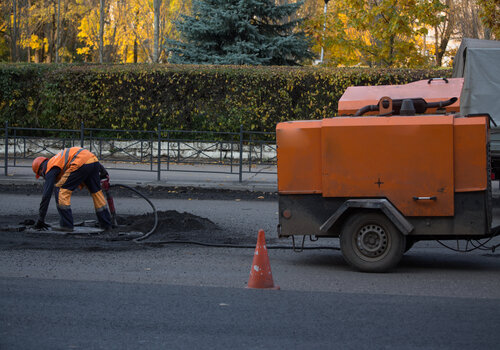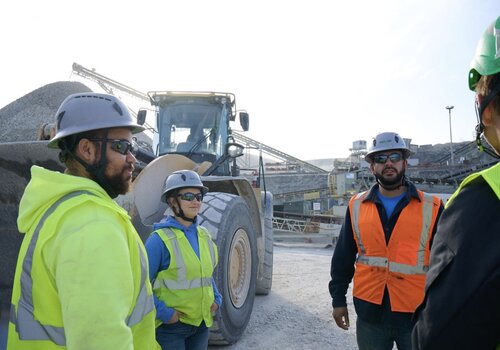Remote control technology is gaining momentum across the construction industry. The ability to operate machines remotely has significant benefits, especially in applications that can be dangerous to the operator or that require precision tool use in areas not visible from the cab. With remote operation, operators can position themselves for optimal viewing of the work area and away from jobsite risks.
"Increased safety and increased productivity are two of the greatest benefits to remote operation,” says Mike Martin, Vice President of Operations, Brokk, Inc. “And some contractors report, depending on application, they are able to complete work up to seven times faster with remote-controlled machines compared to using crews with handheld equipment.”
Remote-Controlled Solutions On Display
Remote control has been popular in demolition applications for many years, however, the number of machines that come equipped—not just remote-control ready, but—with full remote-control operation is growing.
For example, at the last CONEXPO-CON/AGG, several dozen machines on display were remote control.
- Brokk displayed several of their next generation radio remote control demolition robots, including their new Brokk 70—the smallest machine in their line. Each machine features the company’s proprietary SmartRemote remote control technology. “To avoid unintentional operator strain, the remote uses a wide adjustable belt that holds the control box comfortably around the operator’s waist, away from the upper back. In addition, intuitive controls allow the operator to work the machine without having to look down at the display,” says Martin.
- Fecon displayed the remote-control FRC70 carrier (sometimes called a prime mover); it is designed for mulching and can traverse slopes up to 55 degrees. By taking the operator out of the cab, the operator need not experience the rigors of working at steep angles.
- Husqvarna displayed their new remote-control LP 9505 trench compactor. Operating in and around trenches is risky so, by taking the operator away from the machine, you decrease the risk of injury or death from trench collapse. The company also displayed their DXR 300 demoltion robot. Together with the SB 302 hammer, it has the highest power-to-weight ratio in its class on the market, enabling a high workload.
- Hyundai Construction Equipment introduced the remote-control HL960A wheel loader; the company expects this machine to serve in severe- or hazardous-duty applications once it becomes commercially available.
- ScanReco reports the company has seen an explosion of electronic control of flatbed trucks in the past year and touts of the productivity gains when using remote control on truck-mounted cranes. “Truck mounted cranes require the operator to precisely locate the crane on the jobsite. After an operator parks the truck and exits the cab, they check the position of the crane again from outside of the cab. Oftentimes, they have to get back into the cab to move the crane into a better position. With remote control, they can find a safe spot onsite that provides an optimal view for positioning the crane. They can even set the outriggers with the remote control,” says Jason Looman, President, ScanReco.
Increased Equipment Functionality
At the show, ScanReco introduced several updates to their existing G2 (Gen 2) and G3 (Gen 3) product lines. Most notable is the inclusion of a global 2.4 GHz frequency. Already available in North America for a few years, this new global standard offers a longer range than other products on the market.
“Because of the higher bandwidth on 2.4 GHz, more data can be transferred in a shorter period and thereby reducing the duty cycle. This reduces the power consumption of the transmitters, giving the operators approximately 50 percent longer operational time per charge of the battery. The increased bandwidth also boosts the update rate of the graphics in the 4.3-inch color display by a factor of four times, allowing for more advanced graphics to be presented to the operator without any delays,” says Looman.
Also, by combining the 2.4 GHz radio signal with a 4.3-inch color display allows many users to increase the amount of data and visualizations on their Personal Control Unit (PCU / transmitter), thereby allowing an operator to see the same indicators and feedback as are available inside the cab. In addition, the new color display can be integrated with a WiFi camera system. This allows operators to see the jobsite in a whole new way.
As the number of cameras, sensors and other feedback devices on construction equipment increases, more equipment is being equipped with radio remote controls that have displays.
“As more equipment becomes autonomous, many original equipment manufacturers are removing the traditional cab from their equipment and are relying on remote controls to operate the equipment in service modes, or to simply bring the equipment to a starting position before the it runs automatically,” says Looman. “We believe this will be a trend going forward as equipment becomes more autonomous.”
Join over 40,000 industry peers who receive construction industry news and trends each week. Subscribe to CONEXPO-CON/AGG 365.












